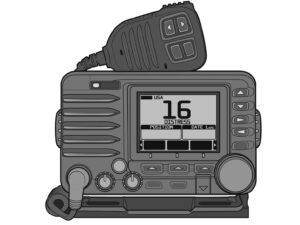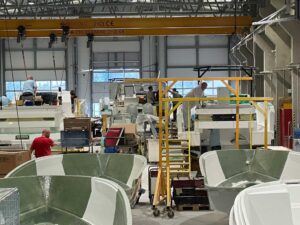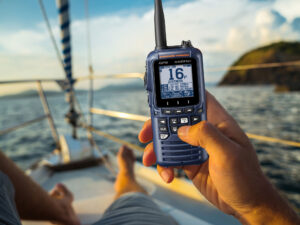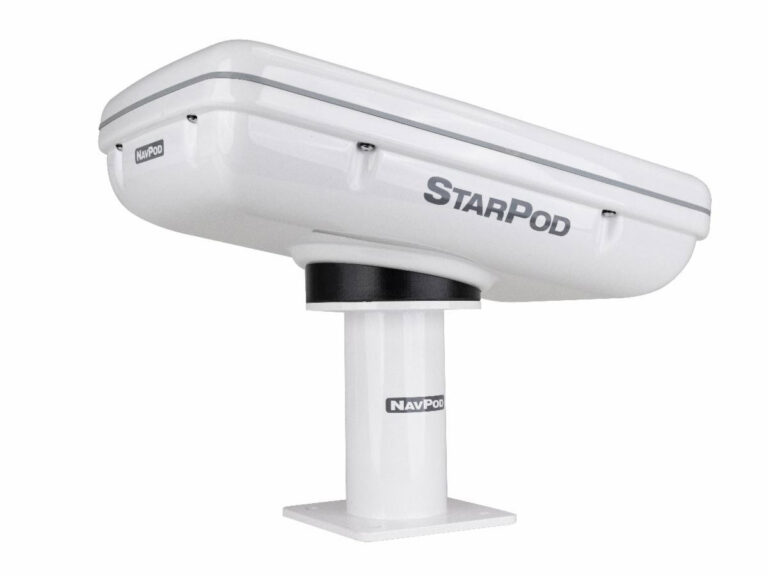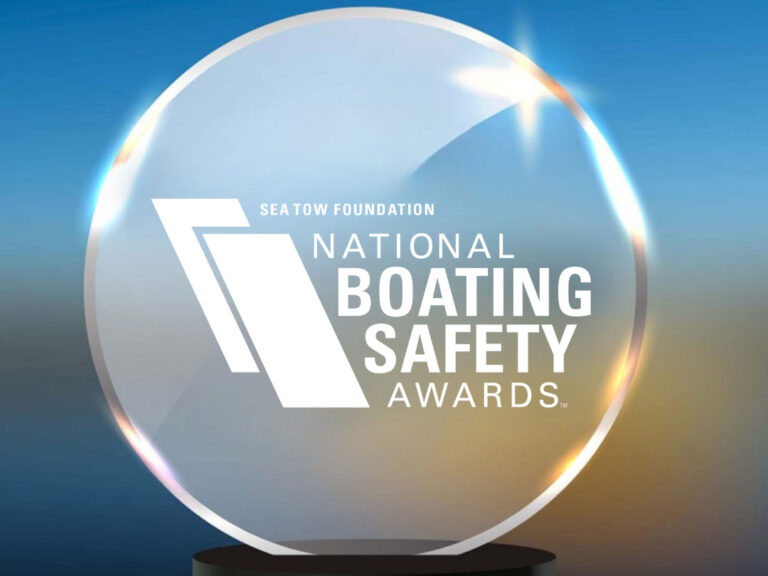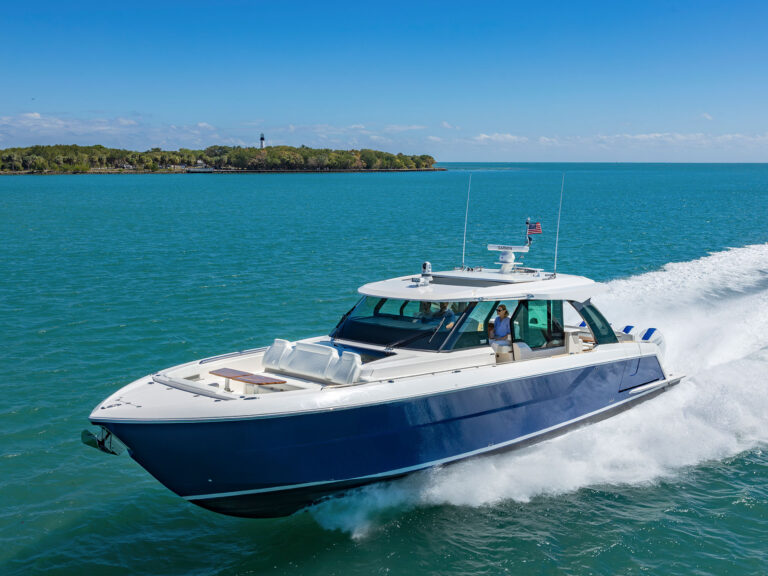
Pulling an anchor up from the seafloor is a job for the birds — or a first mate you don’t like very much. It’s backbreaking work that you probably start to dread the second you deploy the anchor and start fishing.
Fortunately, there is a solution to this problem: You can purchase and install an anchor winch or windlass.
Below, we’ll explain everything you need to know about boat anchor winches, outline the different types that are available, and share some of the things you’ll want to consider when picking a specific model.
Understanding Anchor Winch Types
There are several distinctive types of winches on the market, and each one offers its own strengths and weaknesses.
Anchor winches are classified in different ways by various boaters and manufacturers, but most people recognize five different types.
Electric Winches
Electric winches connect to your boat’s battery (or a supplemental battery, in many cases) and deploy or retrieve the anchor with the push of a button.
There’s a ton of variation within this category. For example, you can pick up electric winches with varying sizes, rode capacities, and motor powers. They also come with varying additional features, such as switches.
Hydraulic Winches
Hydraulic motors use non-compressible fluids to power the engine and deploy or retrieve your anchor.
Hydraulic winches are not common among recreational boaters, as they’re often quite a bit more expensive than an electric anchor winch and much more difficult to install. Additionally, adding a hydraulic winch to a typical fishing boat would usually fall into the “overkill” category.
In fact, one of the primary benefits of hydraulic winches is their ability to generate high amounts of torque — levels that just aren’t necessary for non-commercial vessels.
Vertical Windlass
Windlasses differ from winches in several ways.
Like winches, windlasses feed or collect rope, chain, or a combination of the two, and allow you to deploy or retrieve your anchor. But while winches store your anchor rode on a rotating drum, a windlass anchor retrieval system doesn’t store anything. Instead, the unused portion of rope or chain is stored in a dedicated compartment called an anchor locker, located below deck.
Vertical windlasses feature a vertically oriented drum-like component called a capstan, which is why they’re sometimes called capstan winches. The capstan turns to collect or feed out chain or rope. They typically require large anchor lockers to provide enough “fall” (vertical distance) from the motor.
A vertical windlass requires a large installation hole, but most of the unit will sit below deck. This helps protect the mechanism from water and keep your deck tidy.

Horizontal Windlass
The primary difference between a vertical windlass and a horizontal windlass anchor retrieval system is the orientation and name of the spinning component. The former has a vertically oriented capstan, while the latter features a horizontally oriented component known as a gypsy.
Additionally, horizontal windlasses take up a bit more space, as they typically sit entirely above the deck. However, on the plus side, they usually work with smaller anchor lockers, as they require less fall.
Some horizontal windlasses, such as the Lewmar Pro Fish Free-Fall, are also designed to allow for manual operation if you experience a power issue. As a bonus, this model even allows for controlled free-fall, allowing you to get on the fish more quickly.

Boat Anchor Winch Key Considerations
Now that you understand the basic categories and styles of winches and windlass anchor retrieval systems, you can start familiarizing yourself with the key characteristics to consider.
While not comprehensive, the following list details most of the things you’ll want to think about before picking a specific model.
- Boat size and displacement: Larger boats require larger winches or windlasses, so you’ll need to select a model that falls within the manufacturer’s recommended guidelines.
- Anchor weight and type: You’ll need to factor your anchor weight into your winch- or windlass-selection algebra (along with the rode weight), but your choice of anchor will generally be based on your boat size and bottom characteristics rather than your windlass or winch model.
- Power source: Electric windlasses and winches often require between 35 and 200 amps of battery power. This can tax your existing motor battery, so it’s often necessary to add an additional battery solely dedicated to the winch or windlass.
- Deck layout and space: Both winches and windlasses take up space, which you’ll have to account for. Windlasses generally take up less deck space (though they do require a storage locker below deck), as winches must be large enough to store the anchor rode.
- Rode type and length: You’ll need to match your preferred windlass to the type of rode it works best with. For example, a vertical windlass will grip rope better than a horizontal windlass, which is important for those using a combination chain-rope rode. Windlasses are generally designed to work with a specific type of rode, such as three-strand rope, and they typically use chains based on ISO- rather than NACM-specs. However, some models — such as the Maxwell Marine RC12-10 — are flexible and work with any type of marine chain. Winches typically work with a variety of types of rope or chain.
- Durability and corrosion resistance: Winches at the low end of the price spectrum often feature plastic components, while high-end models are made from things like stainless steel or bronze and are sure to last much longer. Nevertheless, some budget-friendly models, like the Trac Outdoor Products Angler 30, are suitable for “occasional” saltwater use. Just be sure to rinse winches featuring plastic components after every use with fresh water.
- Compatibility: It’s important that everything in your ground-tackle chain — including your winch, anchor, and rode — matches your needs and works well with each other. To ensure compatibility, choose an anchor and rode first, then select a winch or windlass that’ll work with each.

Installation and Maintenance
No matter what type of winch anchor or windlass you select, you’ll have to install it correctly and maintain it (or pay someone else to do so). The specifics will vary a bit depending on the type and model you select, but you’ll generally want to think about the following requirements:
- Mounting: Generally speaking, winches are easier to mount and install than windlasses — especially if your boat isn’t already set up to accommodate a windlass. Winches can be installed in many different places, but you won’t have as many options when installing a windlass. Nevertheless, windlasses usually look better once installed.
- Electrical or hydraulic connections: Electrical connections are often easy enough for boat owners to do themselves, but hydraulic connections are more complicated and will likely necessitate professional assistance.
- Rode management: Winches make rode management simple, as they store the rode in a neat and tidy manner, right on the drum. On the other hand, windlasses store the rode in a locker. This helps to protect the rode from the elements, but tangles and snags are more common. It’s also worth noting that winch drums don’t impose the kind of wear-and-tear that the capstans and gypsies of windlasses do.
- Regular inspection and maintenance: The most important thing to do for your winch or windlass is to rinse it with fresh water after every trip. You also should regularly inspect winches and windlasses for signs of salt corrosion or rust and check all components that rotate or experience friction for signs of wear. Many manufacturers also recommend lubricating the moving components with marine-grade grease once a year (or more frequently). Hydraulic winches require additional maintenance, including regular oil level checks and filter replacement.
- Winterization: Hydraulic and electric winches should be winterized in the manner that the manufacturer recommends. It’s also wise to rinse the unit and your anchor rode with fresh, clean water before storing your boat for the winter.
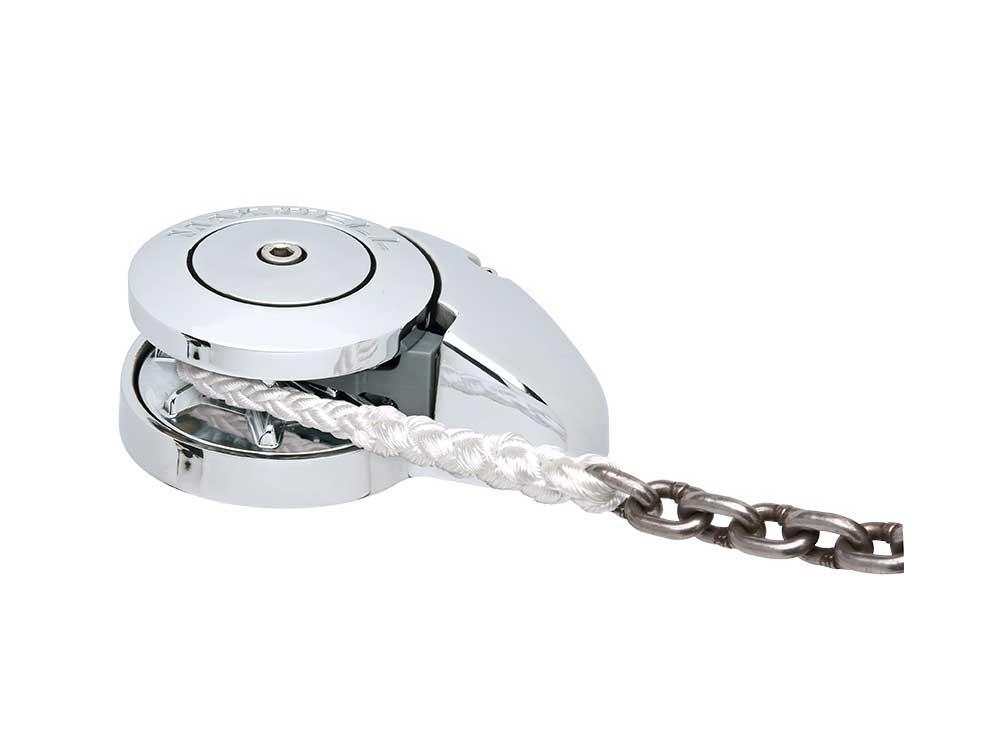
Budgeting and Cost Factors
Winches and windlasses vary significantly in terms of cost. We’ll outline some of the primary factors that influence anchor winch pricing below, so that you can get the most bang for your buck.
Boat Anchor Winch Type and Brand
Electric winches are usually available for low three-digit prices, while hydraulic winches can be extremely pricey. Windlasses, thanks to their complexity, are a bit pricey, though some models — like the Maxwell Marine RC6 — hover around the $1,000 price point.
Additionally, it’s important to consider the brand you select. Winches and windlasses offered by premium brands, like Lofrans, Imtra Corporation, Lewmar, and Maxwell Marine, cost a bit more but provide better performance and value.
Winch Capacity and Size
You’ll need to ensure that your new winch is capable of storing a sufficient amount of rode and that the motor will be strong enough to retrieve the anchor. You don’t want to overburden the motor, which may shorten its working lifespan.
This means thinking about your boat’s size, the anchor and rode weight, and the depth at which you normally anchor.
Always follow the manufacturer’s recommendations, but you usually want a motor rated for at least three times the combined weight of the rode and ground tackle. For example, if your anchor, rope, and chain combine to weigh 300 pounds, you’ll need a motor rated for at least 900 pounds.
Winch and windlass manufacturers tend to provide model recommendations based on boat length too. In other words, they’ll recommend one or more models for boats in the 20- to 40-foot-long range, while recommending different models for larger or smaller boats.
Rode storage capacity is relatively straightforward for winches — simply check the manufacturer’s guidelines. This is a bit more complicated for windlasses, as the rode is stored in a locker, but most locker manufacturers will identify the capacity limits of their lockers.
Material and Construction Quality
Winches and windlasses made from higher-quality materials will cost more money than those made from more affordable materials. But because you’ll be using them in a corrosive, saltwater environment, this will be money well spent. Poor-quality materials will break down far more quickly than high-end alternatives, which means you’ll just have to replace them sooner.
You can avoid this problem by simply sticking to high-quality winches and windlasses, which are made of superior metal and coated to protect them from the elements. You’ll pay more up front, but doing so will pay dividends.
Additional Components
You may need to purchase a few additional components to get your winch or windlass up and running — especially if you’re adding a new winch or windlass, rather than replacing an existing one.
You may need a few relatively low-cost items, such as a chain stopper, as well as an anchor roller to ensure the rode feeds into the device properly. Speaking of the rode, you may also need to swap out the rope or chain to match the specifications of the winch or windlass. You’ll probably also want a footswitch to operate the winch or windlass in hands-free fashion, but this isn’t strictly necessary.
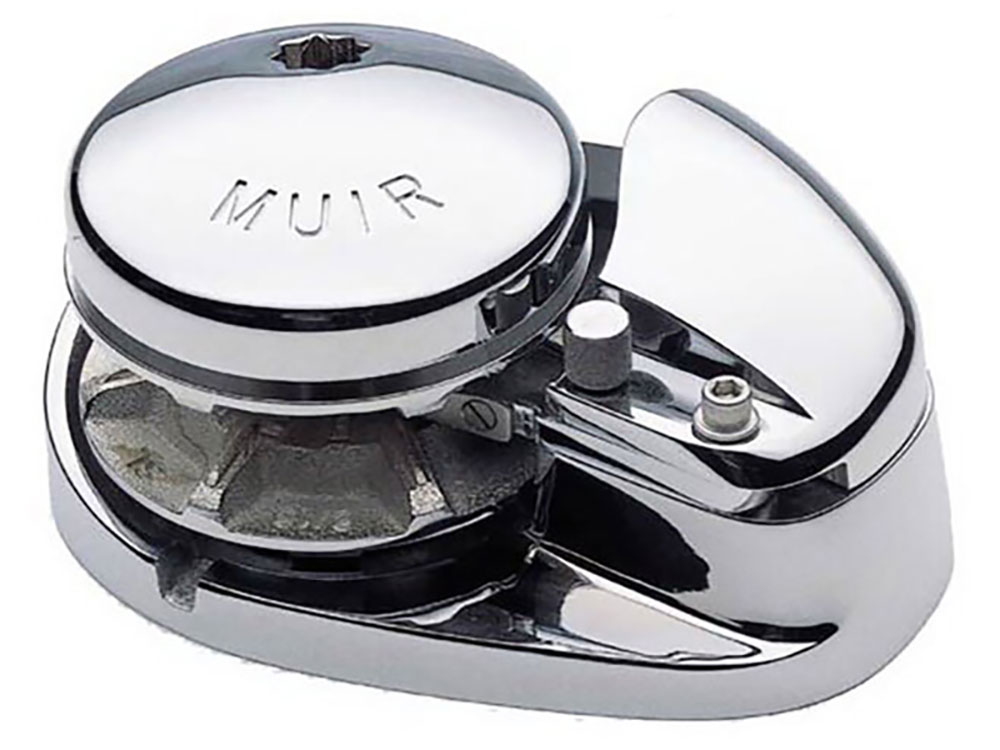
Installation and Professional Services
For the most part, installation doesn’t contribute a lot to the cost of installing a boat winch. Anglers with any modicum of mechanical experience will typically find that an electric boat anchor winch is easy enough to install without professional assistance.
Installing a windlass is a bit more complicated, given the greater complexity of the device. You’ll also have to access the anchor locker and ensure it provides enough fall for the rode, but that’s not especially technically challenging.
Hydraulic winches are another matter, though. They will often require professional installation, which will represent additional costs.
Maintenance and Repair Costs
As with any piece of equipment, you’ll need to factor in the costs of repairs and on-going maintenance when budgeting for a winch or windlass.
Maintenance usually isn’t very expensive for electric winches. Typically, you’ll only need to purchase things like lubricating grease. Hydraulic winches, on the other hand, will cost a little more to maintain, as you’ll often need to purchase new filters from time to time.
As for repair costs, you’ll generally find that spending a little more money upfront by purchasing from reliable manufacturers saves money in the long run. Budget-priced, no-name models break far more often than high-end units.
Don’t Get Stuck With the Wrong Boat Anchor Winch
You don’t want to go through all of the time and expense of buying and installing a new anchor winch for boat use only to find that the motor isn’t strong enough to lift your anchor that’s sitting 100 feet below your boat. Worse, you don’t want to try saving a few bucks by buying a budget-priced winch that breaks and requires complete replacement before it’s even seen one full season.
So, be sure to heed the manufacturer’s advice regarding motor power and size, and above all else, stick to high-quality winch and windlass manufacturers — like some of the ones discussed above. You’ll pay a little more up front, but you’ll be glad you did.
FAQ
What’s the difference between a winch and a windlass?
The primary difference between a winch and a windlass is the location in which the rode is stored. Winches feature a large drum around which the rode wraps; windlasses feed the rode into a separate storage locker.
What size winch should I get for my boat?
It’s always important to carefully select your winch based on the size of your boat and the weight of your rode and anchor. However, a 2:1 ratio based on your boat weight is a good rule of thumb. In other words, if your boat weighs 2,000 pounds, you’ll want a winch rated for 1,000 pounds.
Do I need a bigger battery for a winch?
In many cases, yes. Winches draw considerable amperage, which can exceed the rating of many existing batteries. So, it’s often necessary to upgrade your existing battery or install a secondary battery, dedicated solely to the winch.
A nature lover and avid angler, Ben grew up fishing and working crab traps on Pier 60 in Clearwater Beach. Despite what you may have heard, he was definitely not frightened the first time he saw a giant tarpon underwater while snorkeling (they’re not so scary when you’re reeling them in).

